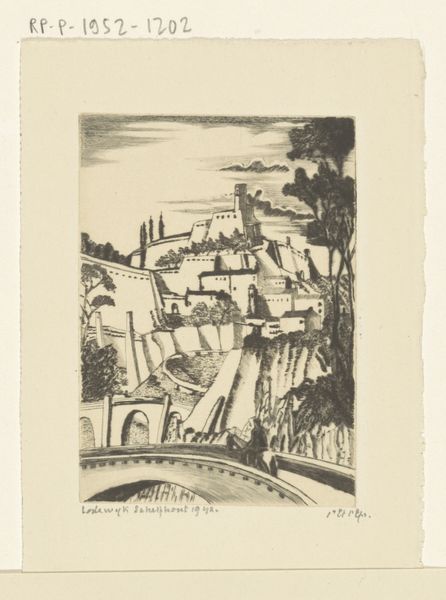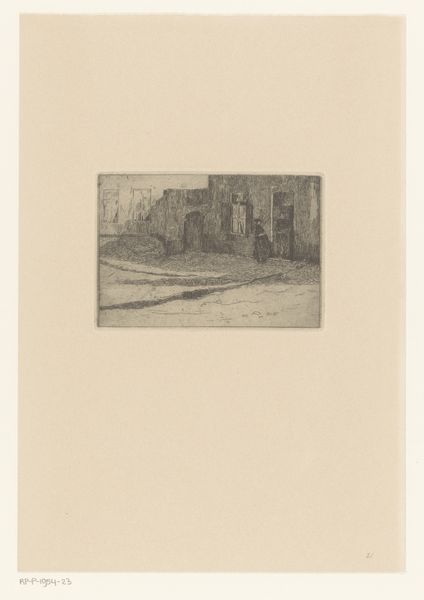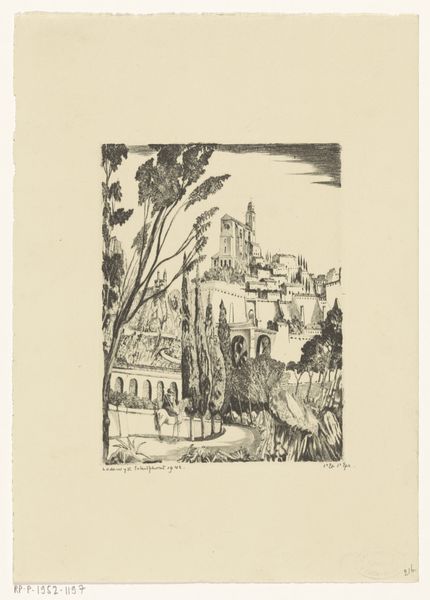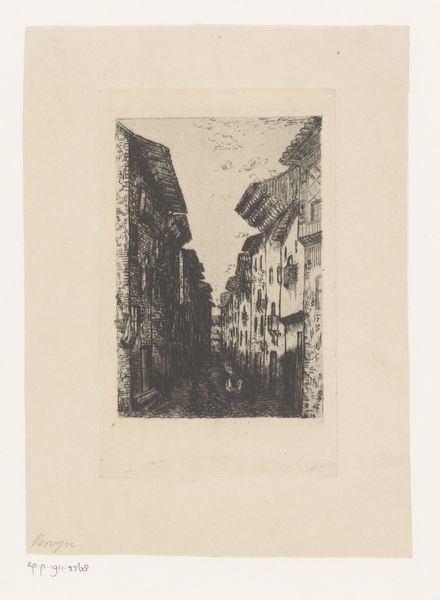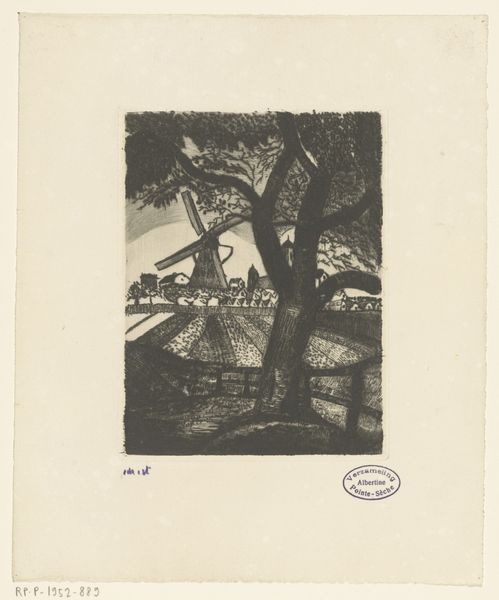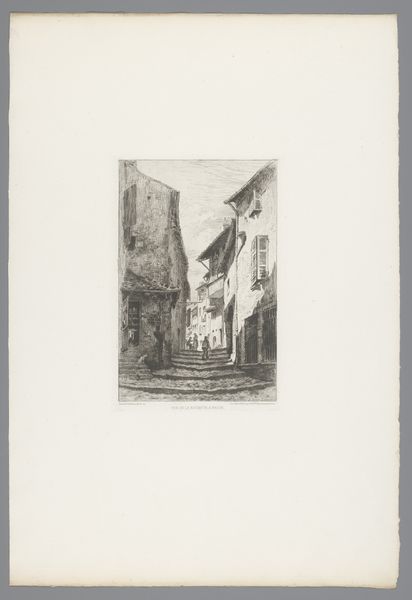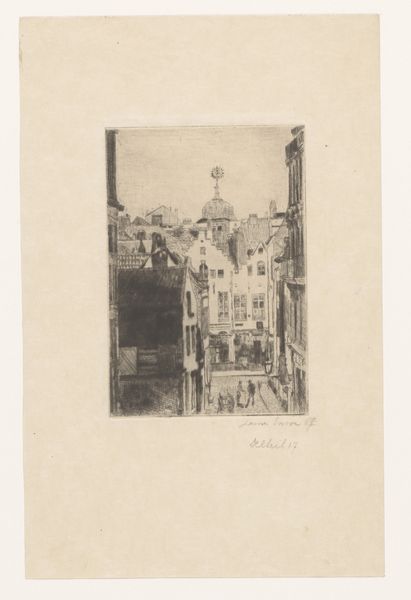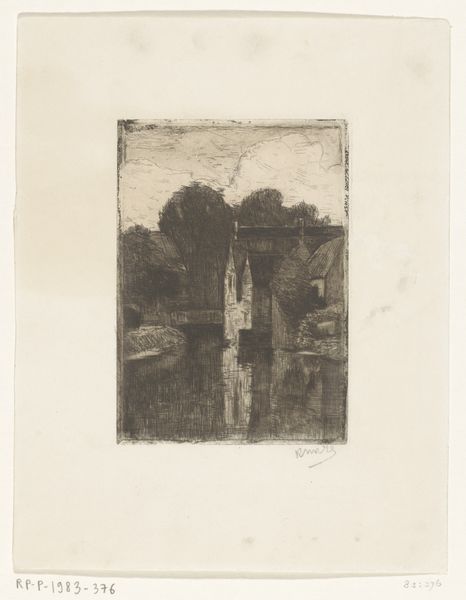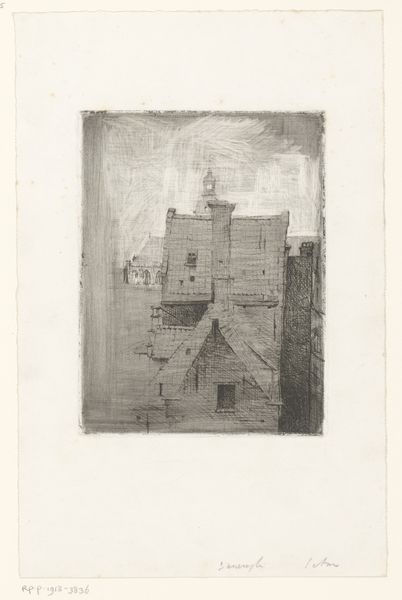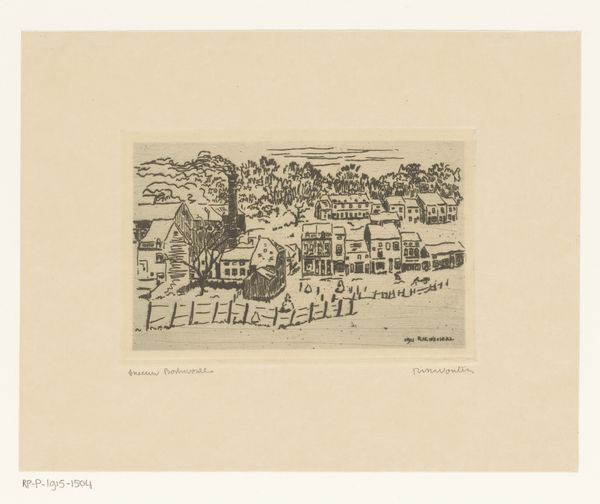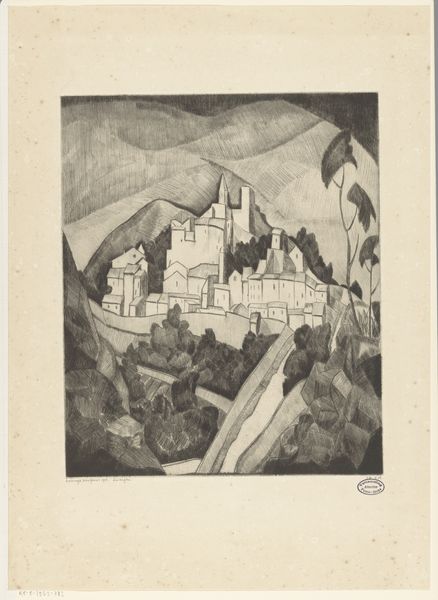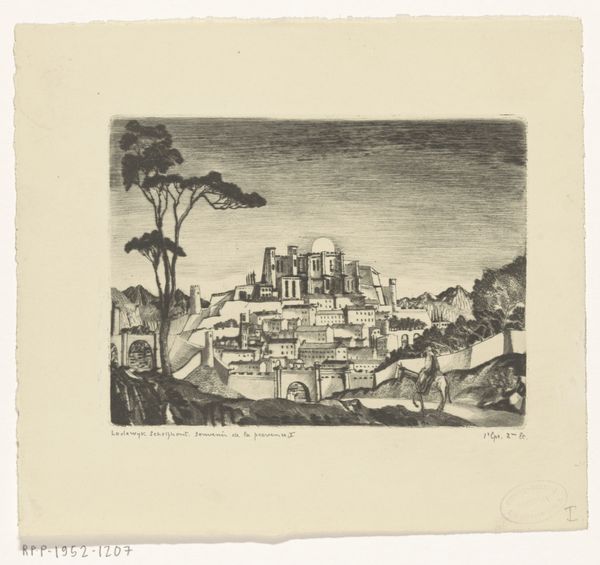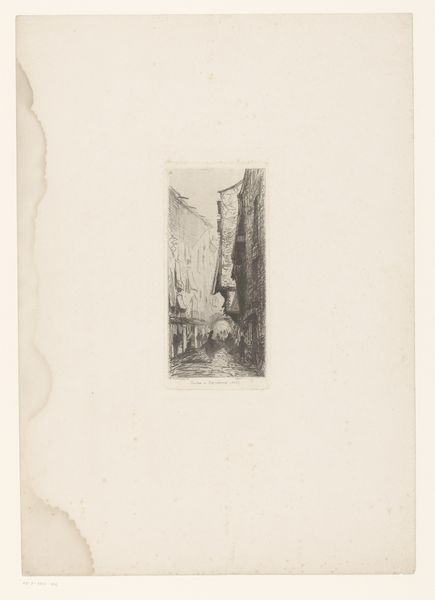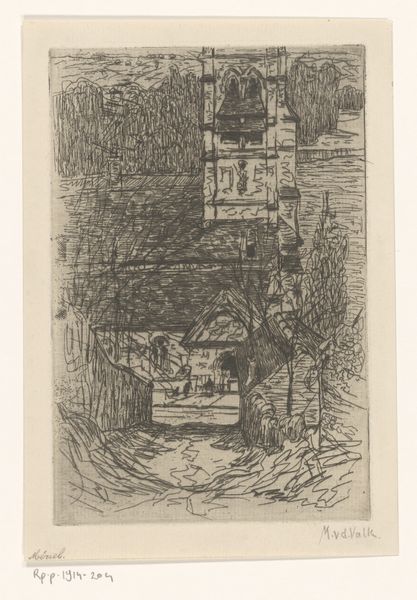
print, etching, engraving
# print
#
etching
#
old engraving style
#
landscape
#
cityscape
#
engraving
#
realism
Dimensions: height 98 mm, width 71 mm
Copyright: Rijks Museum: Open Domain
Editor: This is Lodewijk Schelfhout's 1942 etching, "Kasteel op een heuvel," or "Castle on a Hill." It's such a detailed little print. I'm struck by how the strong lines and contrast create a real sense of depth and monumentality. How do you approach understanding this type of landscape print? Curator: We must examine the intrinsic elements of this piece. Observe how Schelfhout masterfully employs linear perspective. The lines of the bridge, the road winding up the hill, and the receding planes of the buildings all converge, guiding the eye. Do you notice the density of line and tone at the top in the sky versus the more sparse rendering in the middle ground? Editor: Yes, the upper area seems much heavier, denser. So, that contrast really emphasizes the castle perched at the top. Curator: Precisely. And consider the textures he creates using only etched lines. The rough stone of the bridge, the smoother surfaces of the buildings – it's all implied through the direction, density, and weight of the lines themselves. Look also how that line directs the eye in upward visual motion. Editor: That’s interesting; I hadn’t thought about it as guiding movement rather than creating depth. The interplay of light and shadow makes the architecture almost pop off the surface. Curator: Notice also that figure on the horse crossing the bridge; see how it punctuates an otherwise empty pictorial plane at the base? How does that detail contribute to the overall composition? Editor: That makes me notice the scale and relative isolation even more. All of the visual tension in this work gives so much expression, and seems an especially powerful effect for such small work! Thanks. Curator: Indeed. Close observation reveals much about the artist's technique and compositional intentions, more than a casual glance might suggest.
Comments
No comments
Be the first to comment and join the conversation on the ultimate creative platform.
